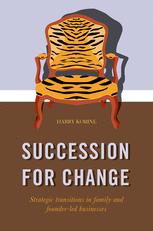

Most ebook files are in PDF format, so you can easily read them using various software such as Foxit Reader or directly on the Google Chrome browser.
Some ebook files are released by publishers in other formats such as .awz, .mobi, .epub, .fb2, etc. You may need to install specific software to read these formats on mobile/PC, such as Calibre.
Please read the tutorial at this link. https://ebooknice.com/page/post?id=faq
We offer FREE conversion to the popular formats you request; however, this may take some time. Therefore, right after payment, please email us, and we will try to provide the service as quickly as possible.
For some exceptional file formats or broken links (if any), please refrain from opening any disputes. Instead, email us first, and we will try to assist within a maximum of 6 hours.
EbookNice Team

Status:
Available4.4
16 reviewsKorine reframes the question of succession in family and founder-lead businesses as an issue of entrepreneurial choice, concentrating on the challenge of succession for change as opposed to the traditional focus on succession for continuity.
It is inevitable that when the leaders of family and founder-lead businesses look to pass on the mantle they naturally want to preserve and maintain the firm they have worked so hard for so long to build up. The shaping influence of family or founder, and the instinctive emotional desire for legacy easily sways succession towards continuity rather than the possibly radical development the business may need to meet new challenges.
Succession for Change shows how competitive advantage has evolved over the last twenty-five years and examines the approaches being adopted by current business leaders, succession service providers and the next generation to address the change imperative in succession.
Korine’s rigorous research and deeply practical approach shows that when change becomes the focus of succession, and developing entrepreneurial values takes precedence over preserving the status quo, succession planning can ensure that firms not only survive the departure of their founders but thrive long after they have gone. He offers a framework for implementing succession as transformation, and rethinking succession governance.
The secret is enabling the next generation of leaders to stand on the shoulders of giants rather than be constantly doomed to stand in the shadow of giants.